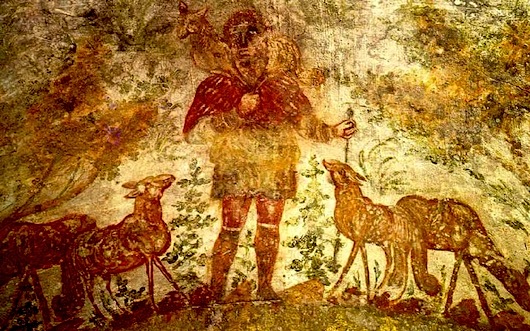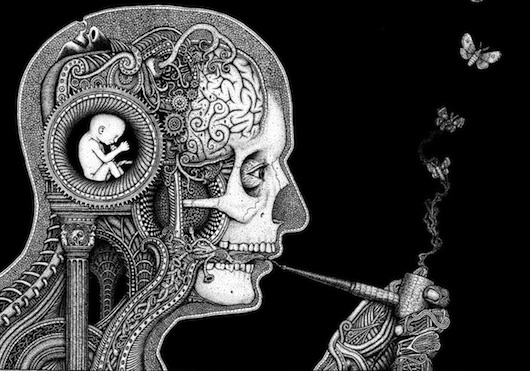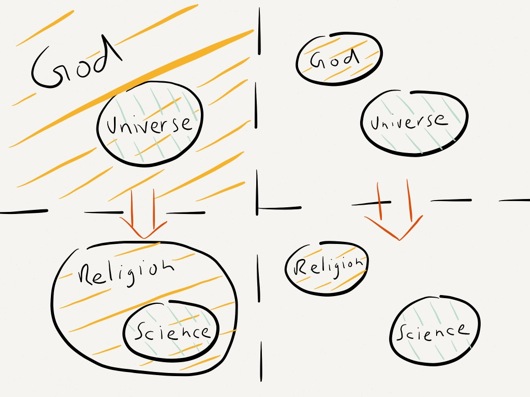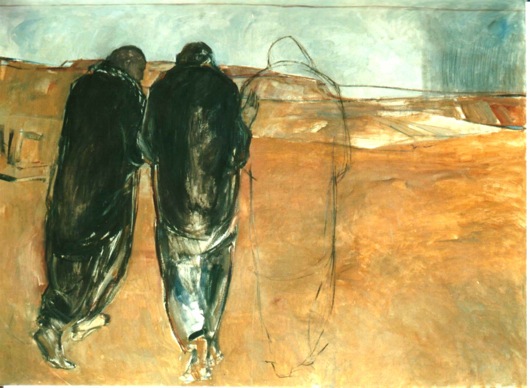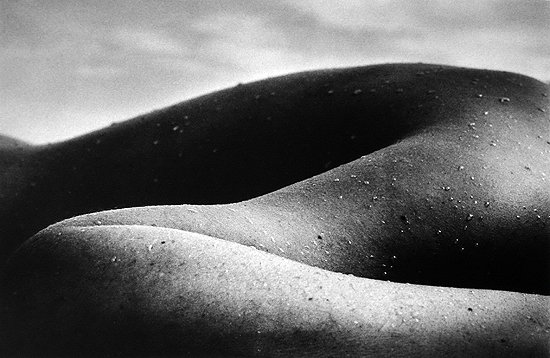
John Paul II opens the 11th talk on the Theology of the Body1 by reflecting on the previous ten. He highlights the profile of the human person and the male-female union presented there as always being “at the root of every human experience. […T]hey are so interwoven with the ordinary things of life that we generally do not realize their extraordinary character. [… They show] the absolute originality of what the male-female human being is inasmuch as he or she is human, that is, also through the body.”
The aspect of Genesis that is taken under the microscope in talks 11-13 is the following sentence: “Now both were naked, the man and his wife, but they did not feel shame.” (2:25), which is placed alongside the insights about “man’s original solitude and original unity” in importance. Original nakedness in the absence of shame evidences innocence, and shows the original “reciprocal experience of the body, that is, the man’s experience of the femininity that reveals itself in the nakedness of the body and, reciprocally, the analogous experience of masculinity by the woman.” This also makes shame the boundary experience between the original human state and that after the fall, also since shame is used in later passages to highlight how reality has altered after the fall: “Then the eyes of both were opened, and they realized that they were naked; they sewed fig leaves together and made themselves loincloths.” (Genesis 3:7).2
The next challenge in understanding the fullness of original nakedness is to attempt its reconstruction by first trying to understand shame. Here John Paul II offers the following description, given the context already set up in the previous chapters: “In the experience of shame, the human being experiences fear in the face of the “second I” (thus, for example, woman before man), and this is substantially fear for ones own “I.”” What then is the meaning of its absence from the original human state? Here John Paul II argues that such a question is a misunderstanding of the Genesis account - it is not like there was a lack of shame before the fall, but that shame was inapplicable, which “indicate[s] a particular fullness of consciousness and experience, above all the fullness of understanding the meaning of the body connected with the fact that “they were naked.”” To understand this “fullness of consciousness” we need to pan out and remember how original solitude (separateness from the rest of creation) is overcome by being created as man and woman (the other being another “I”). This overcoming of solitude occurs “through the body [… which is the] direct and visible source of [the] experience that effectively establishes their unity.” Therefore “the man and the woman were originally given to each other precisely according to this truth inasmuch as “they were naked”” also as evidenced by the “perception of the senses.”
At this point John Paul II argues that while the above external view of nakedness is essential and not to be discounted, it is necessary to look at its inner dimension as well. “[T]hrough its own visibility, the body manifests man and, in manifesting him, acts as an intermediary that allows man and woman, from the beginning, to communicate with each other.” But what is this interior nakedness that the body manifests? Here John Paul II’s answer is yet another stunner:
“To this fullness of “exterior” perception, expressed by physical nakedness, corresponds the “interior” fullness of the vision of man in God, that is, according to the measure of the “image of God” (see Genesis 1:27). According to this measure, man “is” truly naked (“they were naked”), even before becoming aware of it (see Genesis 3:7–10).”Before the fall man internally sees (understands!) woman as she was created in God and woman sees man again as created in God, which makes shame inapplicable. Pure genius! And he continues:
“[Man] has […] a share in the vision of the Creator himself — in that vision about which the account of Genesis 1 speaks several times, “God saw everything that he had made, and indeed, it was very good” (Genesis 1:31). “Nakedness” signifies the original good of the divine vision. It signifies the whole simplicity and fullness of this vision, which shows the “pure” value of man as male and female, the “pure” value of the body and of [its] sex.”A consequence of this state is that it “does not contain an inner break and antithesis between what is spiritual and what is sensible. […] They see and know each other, in fact, with all the peace of the interior gaze, which creates precisely the fullness of the intimacy of persons.” Finally, John Paul II concludes by summing up the original meaning of nakedness in that it “corresponds to the simplicity and fullness of vision in which [man’s and woman’s] understanding of the meaning of the body is born from the very heart, as it were, of their community-communion. We will call this meaning “spousal.”” This brings us to the end of his analysis of man and woman “from the beginning,” which has taken us up to the threshold of the fall. The next part of the book then looks at how man and woman are created as a gift and takes the “spousal” relationship as its point of departure.
I have to say that, beyond the content for which my enthusiasm should be explicit from the above, I continue to be hugely impressed with John Paul II’s method, behind which I feel a profound trust in God and in Scripture containing wisdom. His efforts to access it are, to my mind, a perfect embodiment (pardon the pun) of the critical, rational approach set out in Vatican II’s Dei Verbum, where faith and trust fuel the quest and where reason and analysis are its means. An aspect of the book that I haven’t mentioned so far are also its superb footnotes, which span sources as diverse as C. G. Jung, Shakespeare, Nietzsche, Marx and Freud, as well as a rich body of biblical scholarly and theological literature (including the young Ratzinger). Far from being carried out in isolation, John Paul II’s thought is lucidly aware of the intellectual context of his time and references the insights of those in and beyond the Church alike.
1 If you are interested in this topic, consider taking a look of the first two posts where I cover earlier chapters first here and then here and getting the book they are based on: Man and Woman He Created Them
2 John Paul II is very careful throughout these talks to be clear about the fact that the Genesis account is a myth, which “does not refer to fictitious-fabulous content, but simply to an archaic way of expressing a deeper content.” So, references to the fall and to humanity before and after it are not to be read historically, but rather as means of conceiving of different aspects of human anthropology, psychology and ontology.




